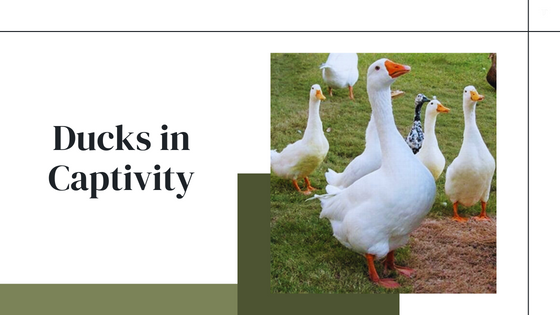
Ducks in Captivity: Benefits and Challenges for Extended Lifespans
From zoos and farms to backyard pets, ducks are one of the most versatile species that adapt to captivity with relative ease. While the environment change certainly has its challenges, many captive duck populations manage to surpass their wild counterparts in terms of lifespan. Let’s explore the factors contributing to this phenomenon, the responsible practices for maintaining a healthy captive population, and the ethical considerations raised by keeping these intricate creatures in captivity.
Understanding Average Lifespan of Ducks in Captivity
The average lifespan of ducks varies significantly based on the species and the habitat. According to Learn Bird Watching – wild ducks typically live anywhere from 2 to 20 years, with larger species generally living longer than smaller ones. In contrast, captive ducks, from the common Pekin to mallards, often live into their teens, with some making it into their 20s. This is in large part due to the controlled environments provided by zoos, farms, and backyard settings.
Food and Health Care
In captivity, ducks have a consistent food supply, eliminating the struggle for survival compared to their wild counterparts. Their diets can be tailored to meet their specific nutritional requirements, thus promoting good health and reducing the risk of malnutrition.
Moreover, captive ducks have access to regular veterinary care. This can lead to the early detection and treatment of diseases or injuries, thereby extending their lifespan. Researchers have been able to study captive populations closely, yielding an immense understanding of avian health and methodologies for preventative care.
No Predators
In the wild, ducks are prey to various predators such as foxes, raccoons, and birds of prey. In captivity, these threats are entirely eliminated, providing them with a safer environment to live and reproduce.
However, as beneficial as the aforementioned aspects might seem, it is essential not to overlook the challenges and ethical aspects associated with this.

Challenges of Keeping Ducks in Captivity
Despite the benefits, raising ducks in captivity invites a unique set of challenges. Controlling their environment might protect them from certain dangers, but it also robs them of their natural behaviors and freedoms.
Limitations on Natural Behavior
Captivity settings often limit ducks’ opportunity to fly, forage, and mate naturally. Restricting these behaviors can lead to stress, obesity, and other health problems due to a lack of exercise.
Ducks in captivity may also lack the social interaction that they would naturally have in the wild. Interaction with other ducks is essential for their mental well-being, making it a critical aspect ignored in confined environments.
Ethical Concerns
From an ethical standpoint, the idea of captivity often raises questions about animal rights. Is it right to keep ducks in controlled environments, primarily for human benefit, despite having the capacity to survive in the wild?
Best Practices for Responsible and Humane Duck Care
For individuals and institutions committed to keeping ducks in captivity, it’s essential to follow responsible and humane practices, including:
- Replicating their natural habitat as much as possible: This would include providing large, water-filled areas where the ducks can swim and forage, as well as open spaces for movement and exercise.
- Ensuring a balanced diet: While it’s easier to provide a constant food supply in captivity, it’s crucial to ensure the food mimics their diet in the wild as closely as possible to prevent malnutrition.
- Providing proper veterinary care: Regular check-ups and immediate illness intervention are crucial to extending the ducks’ lifespan.
- Grouping them properly: Ducks are social animals and thrive better in the company of other ducks.
Conclusion
In conclusion, while keeping ducks in captivity has its benefits in terms of extended lifespans through controlled nutrition, elimination of predations, and health care, it introduces unique challenges and ethical considerations. As the conversation continues to evolve, it’s crucial that any caregiver or institution committed to keeping these intricate creatures in captivity prioritize their health, happiness and closely mimic their natural habitat to ensure their overall wellbeing.





